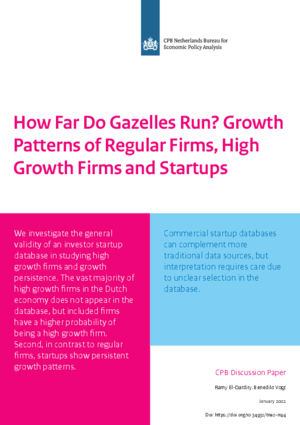How far Do gazelles run? Growth Patterns of Regular Firms, High Growth Firms and Startups
Recently, the toolkit to study startups has been extended as privately owned databases about innovative firms have become available. These databases offer a potentially rich and up to date source of information which complements data from national statistics agencies. However, evidence on how representative these type of databases are when it comes to HGFs or the startup landscape of a country is scarce. Little is known about how growth patterns of firms included in private startup databases actually compare to the residual firm population in a country. A more thorough understanding of the general validity of private startup databases is therefore much needed.
Downloads
In this paper we investigate the general validity of an investor startup database in studying high growth firms and growth persistence. To do so, we match Dutch administrative firm level panel data with this startup database.
We establish two main facts. First, although the vast majority of high growth firms in the Dutch economy does not appear in the database, included firms do have a higher probability of being a high growth firm. Second, in contrast to regular Dutch firms and previous findings in the literature, startups show a strikingly persistent growth pattern: their growth phases are prolonged. We conclude that commercial startup databases can complement more traditional data sources, but interpretation requires care due to unclear selection in the database.
